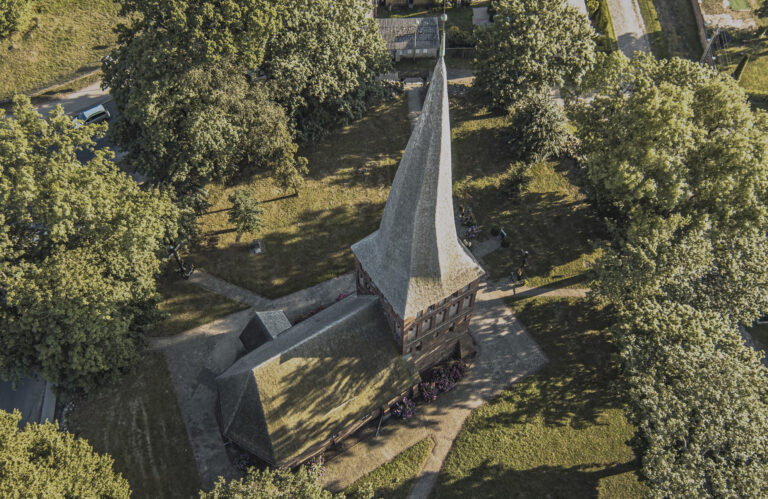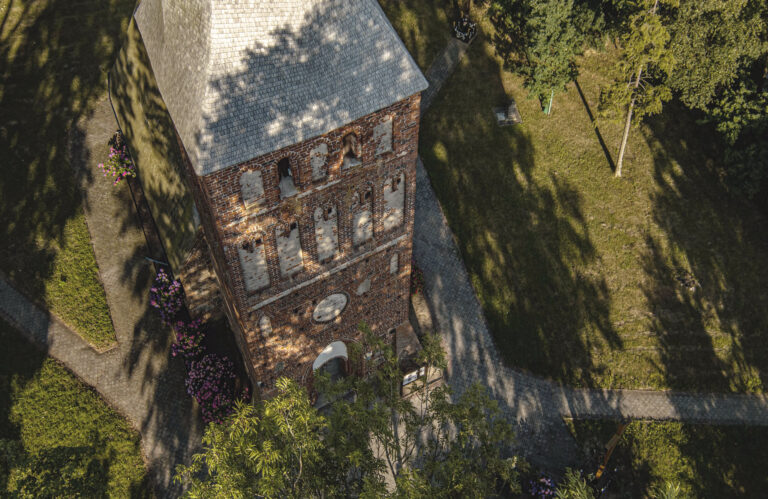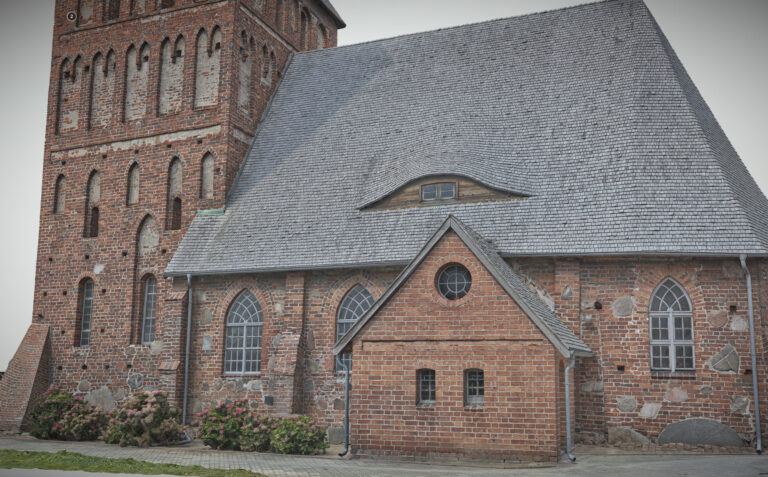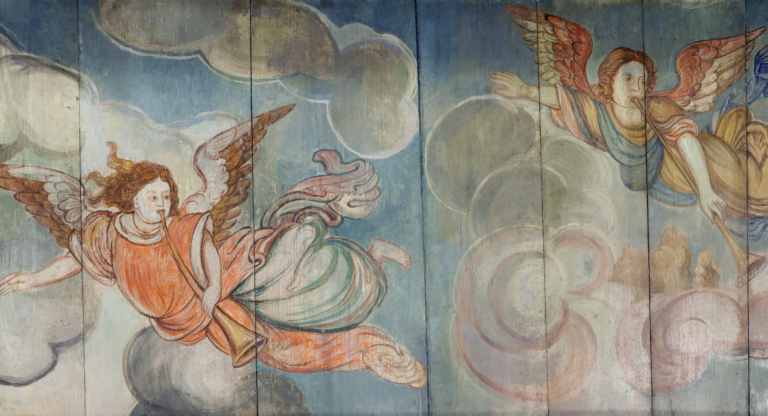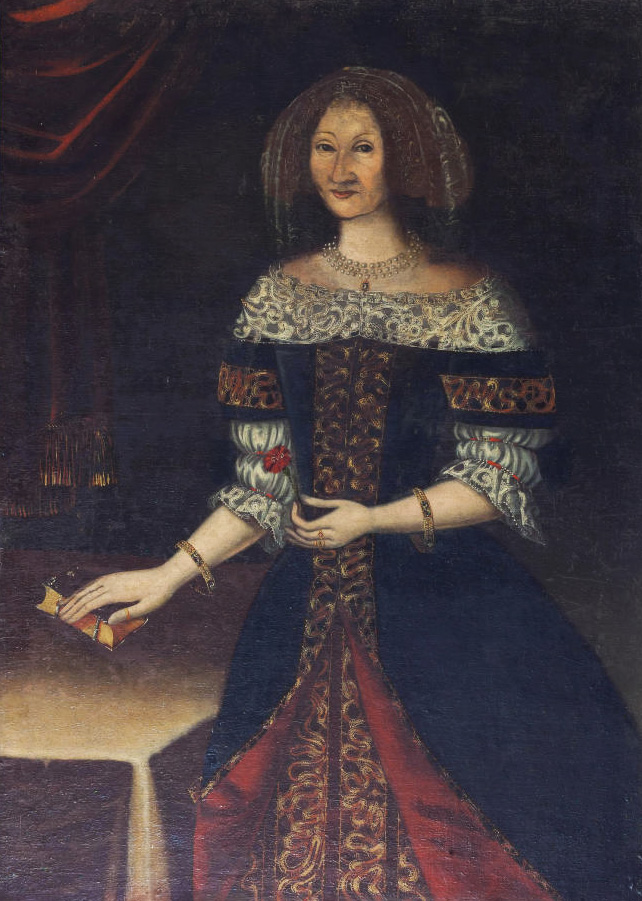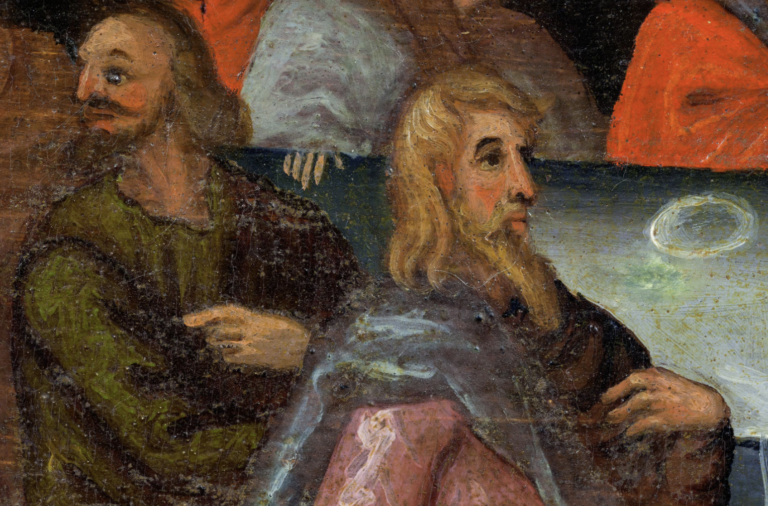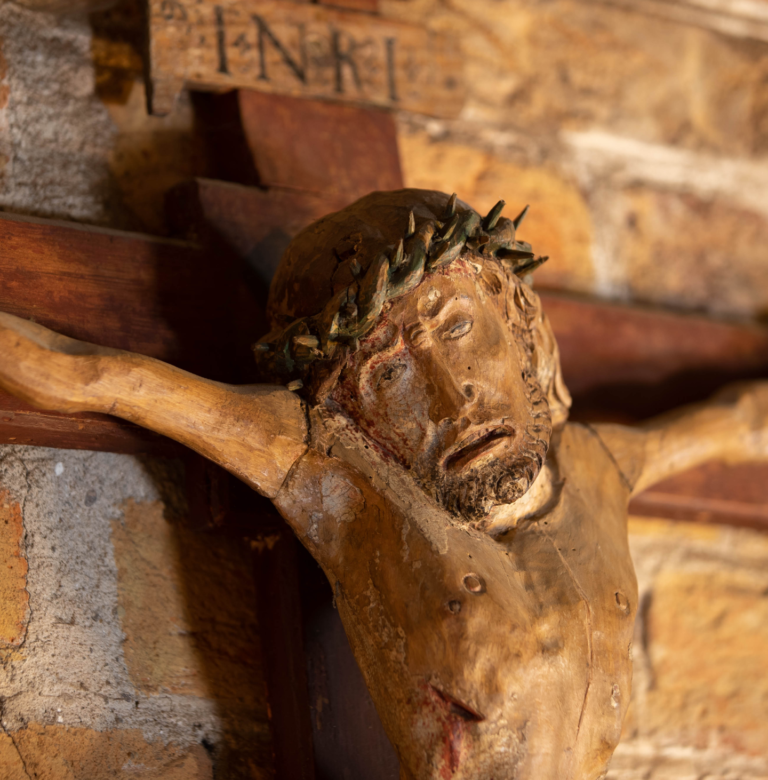St. Mary’s the Queen of Poland Church at Iwiecino
explore
Intro
Three
Gateways
Led to
the Church
The Iwiecino parish constituted itself towards the end of the 14th century.
The church stood at the center of an old graveyard surrounded by a mound of stones. It had three gate entries. Each of them belonged to one of three villages of which the-then parish was composed. These villages were the following: Iwiecino, Wierciszewo and Bielkowo. The inhabitants of these villages were required to use only this gate which belonged to their village. The gates belonging to the villages of Wierciszew and Bielkowo were considerably wider than the gate for use of the villagers of Iwiecino, because funeral celebrations were performed by the pastor in their proximities.
 gigapanorama
gigapanorama
History
The Landmark
with a Long
History
The Iwiecino temple is the oldest and the most beautiful church which stands on the territory of a historic dominion of the Cistercians’ Monastery at Bukowo Morskie.
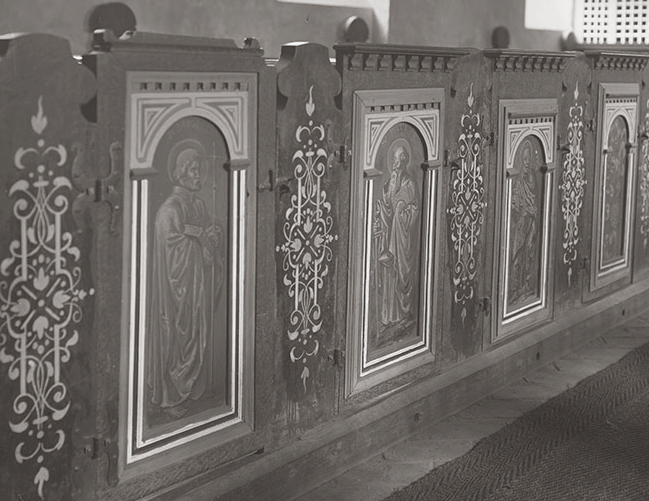
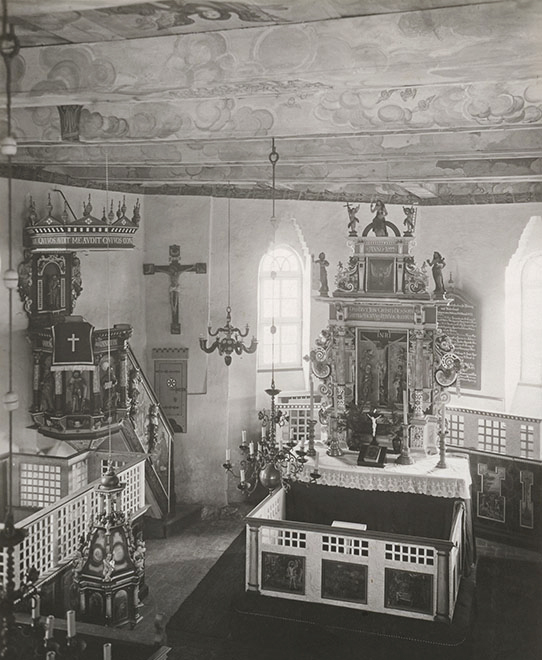
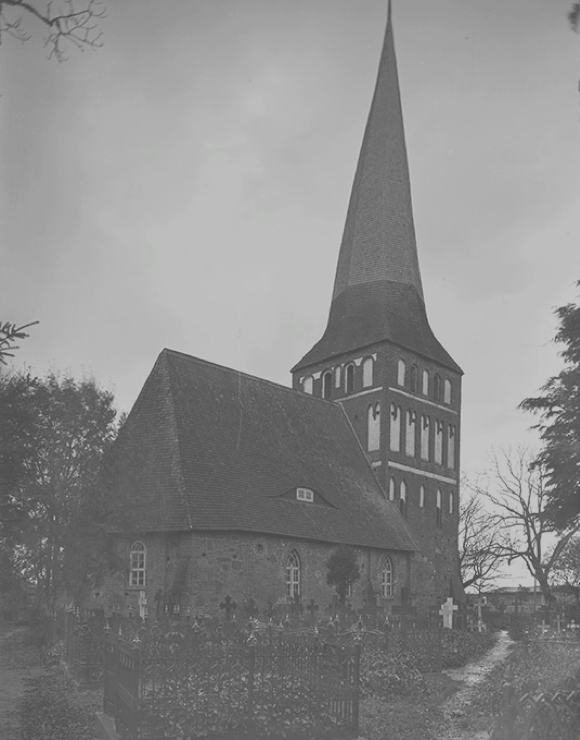
It belongs to a unique group of 75 gothic village churches of which the Western Pommerania is noted. They are all situated in the belt along the sea coast line of approximately 40 kilometer width.
A Multi-faceted History
The eldest items of the church fitting give evidence to its Cistercian origin. The sacramental cabinet and the crucifix come from the middle of the 15th century. In particular, the ends of the crucifix arms decorated with medallions featuring 4 symbols of the Evangelists look to be created in the times of the activity of the monastery at Bukowo Morskie. In turn, the 17th century outfit for a liturgy confirms a protestant rite dominant in the then Pomerania which found itself under the influence of the Reformation Movement and the art it brought along with it.
Architecture
A Block
of Stone
with paintings
upon the ceiling
The church at Iwiecino is a temple whose outline has been aligned with its gothic nave and the presbytery which ends two-sided. It features steeply arched windows and a fault portal which is its entrance.
The church tower with a height of 32 meters is bent westward on purpose in order to protect it from strong winds blowing in this region from the same direction. The church tower and its nave have been shingled with the oak wood. At the top of the tower one can see the wind indicator in the form of a tracery cock standing on the sphere which features a four digit number of 1663. The tower elevations were richly decorated with blends of varying rhythm. The tower is covered with a pyramid roof unlike the nave which is covered with a doubly precipitous roof. The sacristy was added to the southern side of the nave in the 19th century.
Painting
A History
Reflected
in the Pieces
of Art
The beauty of the church body signals only what one can see inside. The movable artefacts confirm a high quality of art and its changes which reflect social, cultural and religious upheavals that took place in the Western Pomerania over the ages. This is a collection of artisanship originating from the workshops of a variety of masters.
The Village of Iwiecino was termed like this by their own inhabitants because of the ceiling polichromy displaying the Final Judgement which dates from 1697. This is the finest element of the temple’s rich interior. The polichromy was painted by an unknown artist who was paid the amount of 36 thalars for it by the then pastor Jacob Malichius. An extended composition of the picture refers to the iconic layout which is traditional for the art of the Middle Ages.
One can see at the very center a figure of Jesus Christ the Judge who is sitting on the rainbow arch surrounded by the Apostles, the elderly of Apocalypse and St. Mary, John the Baptist as well as the Angels announcing the World’s End. The lower part of the picture is filled with figures of the dead resurrecting from the graves. Inside the presbytery one can see the Father God and Its Son Jesus Christ with the Dove embodying the Holy Spirit (as a Part of the Holy Trinity) who is situated at the altar’s crowning.
Easel
paintings
In addition to the beautiful polychromes in the church, there are also works of easel painting.
Portrait of the founder Anna von Bulghrin in the nave of the church, painted by an unknown author, the Last Supper.

Sculpture
Sculpted
in the Space
The wealth and diversity of the movable relics the Iwiecino church houses within its cozy space gives evidence to the changes in the art as well as to the metamorphoses in the religious and social life the community living on the territory of the Western Pomerania underwent. These precious monuments come from the times of the Middle Ages, Renaissance and Baroque.
Among them one can find a Gothic sacramental cabinet with the carved doors, the altar from 1622 decorated with the figures and ornaments in the style of mannerism; a manneristical raised platform built from 1646 to 1650 which contains sculptures and paintings, a baptist font of the spherical shape decorated with the painted shallows displaying the scenes of baptizing Jesus Christ and the figures of four Evangelists; a lot of benches dating from 1588 which are painted decoratively with figural, floral as well as zoomorphic motifs; the epitaph of Martin von Plathe or a particularly valuable polychromy demonstrating the Final Judgement which is visible on the beam ceiling of the church.
 The Wall Joint Masked with the Angel’s Head – I
3D MODEL
The Wall Joint Masked with the Angel’s Head – I
3D MODEL
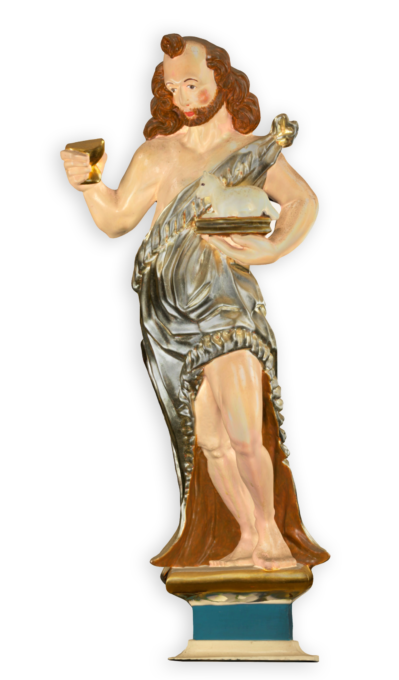 The Sculpture of St. John the Baptist
3D MODEL
The Sculpture of St. John the Baptist
3D MODEL
 The Female Mask
3D MODEL
The Female Mask
3D MODEL
 The Female Herma
3D MODEL
The Female Herma
3D MODEL
 The Putta’s Head – IV
3D MODEL
The Putta’s Head – IV
3D MODEL
 The Sculpture of Jesus Christ Pantocrator
3D MODEL
The Sculpture of Jesus Christ Pantocrator
3D MODEL
 The Male Mask
3D MODEL
The Male Mask
3D MODEL
 The Sculpture of Moses
3D MODEL
The Sculpture of Moses
3D MODEL
 The Putto with No Instrument
3D MODEL
The Putto with No Instrument
3D MODEL
 The Sculpture of Mary Mother of God
3D MODEL
The Sculpture of Mary Mother of God
3D MODEL
 The Angel with Two Cups
3D MODEL
The Angel with Two Cups
3D MODEL
 The Putto with a Violin – I
3D MODEL
The Putto with a Violin – I
3D MODEL
 The Putto with a Harp
3D MODEL
The Putto with a Harp
3D MODEL
Artisanship
The Rituals
of the Ceremony
The eldest fitting of the Church at Iwiecino points to its Cistercian heritage.
Such relics as the sacramental wooden cabinet and the late Gothic crucifix richly decorated were made when the church was still under the cultural influence of the Monastery in Bukowo Morskie. A liturgic fitting of the interior which originates from the 17th century reflects a protestant notion and a new post Roman Catholic culture which dominated Pomerania within the wider territory of the Western Europe in the period following the victory of Reformation.
 gigapanorama
gigapanorama
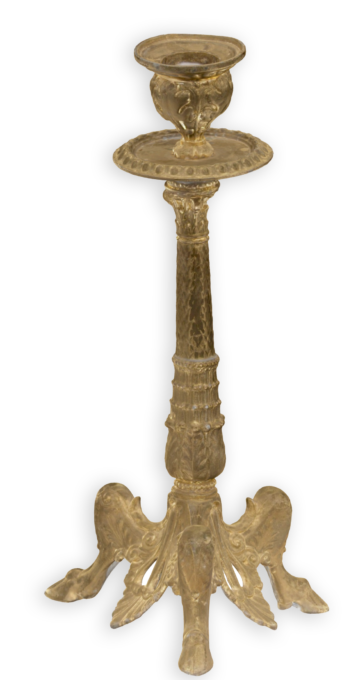 The Candlestick – IX
3D MODEL
The Candlestick – IX
3D MODEL
 The Handle with Knocker
3D MODEL
The Handle with Knocker
3D MODEL
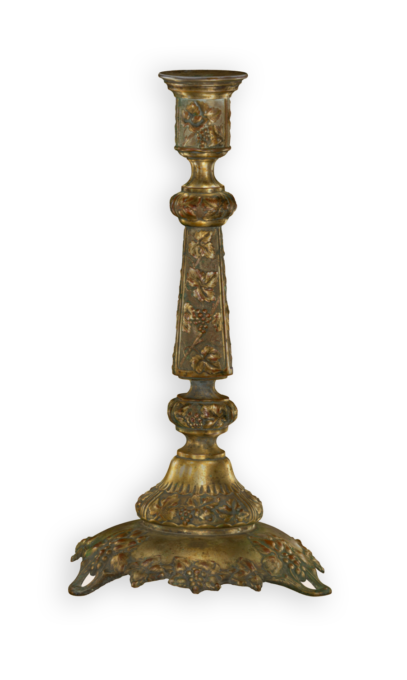 The Candlestick – III
3D MODEL
The Candlestick – III
3D MODEL
 The Spring Bolt
3D MODEL
The Spring Bolt
3D MODEL
 The Candlestick – I
3D MODEL
The Candlestick – I
3D MODEL
 The Hook Hinge – I
3D MODEL
The Hook Hinge – I
3D MODEL
 The Pin Hinge
3D MODEL
The Pin Hinge
3D MODEL
 The Door to the Bench Occupied by the Commoners – VI
3D MODEL
The Door to the Bench Occupied by the Commoners – VI
3D MODEL
 The Candlestick – V
3D MODEL
The Candlestick – V
3D MODEL
 The Door to the Bench Occupied by the Commoners – III
3D MODEL
The Door to the Bench Occupied by the Commoners – III
3D MODEL
 The Hook Hinge – III
3D MODEL
The Hook Hinge – III
3D MODEL
 The Door to the Bench Occupied by the Commoners – IV
3D MODEL
The Door to the Bench Occupied by the Commoners – IV
3D MODEL
 The Candlestick – VII
3D MODEL
The Candlestick – VII
3D MODEL
 The Door to the Bench Occupied by the Commoners – VII
3D MODEL
The Door to the Bench Occupied by the Commoners – VII
3D MODEL
 The Handle with External Bolt
3D MODEL
The Handle with External Bolt
3D MODEL
 The door of the municipal bench no.2
3D MODEL
The door of the municipal bench no.2
3D MODEL
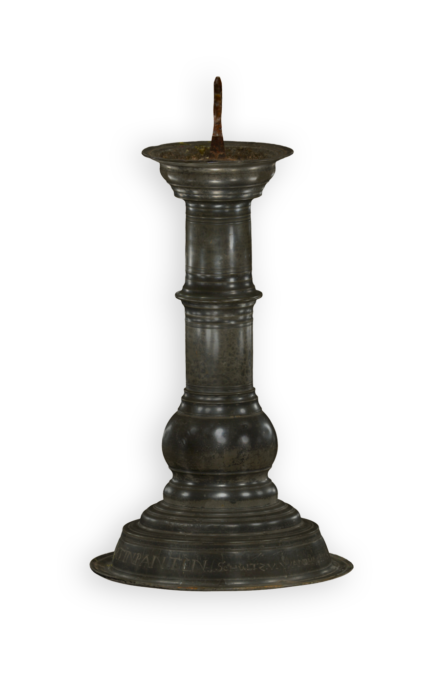 The Candlestick – II
3D MODEL
The Candlestick – II
3D MODEL
 The Candlestick – VIII
3D MODEL
The Candlestick – VIII
3D MODEL
Promotion of Culture
The project “Increasing access to the cultural heritage of the 14th century church in Iwiecino through digitization of its resources” received funding from the Minister of Culture and National Heritage from the Culture Promotion Fund and from the funds of the West Pomeranian Voivodeship in 2019.

